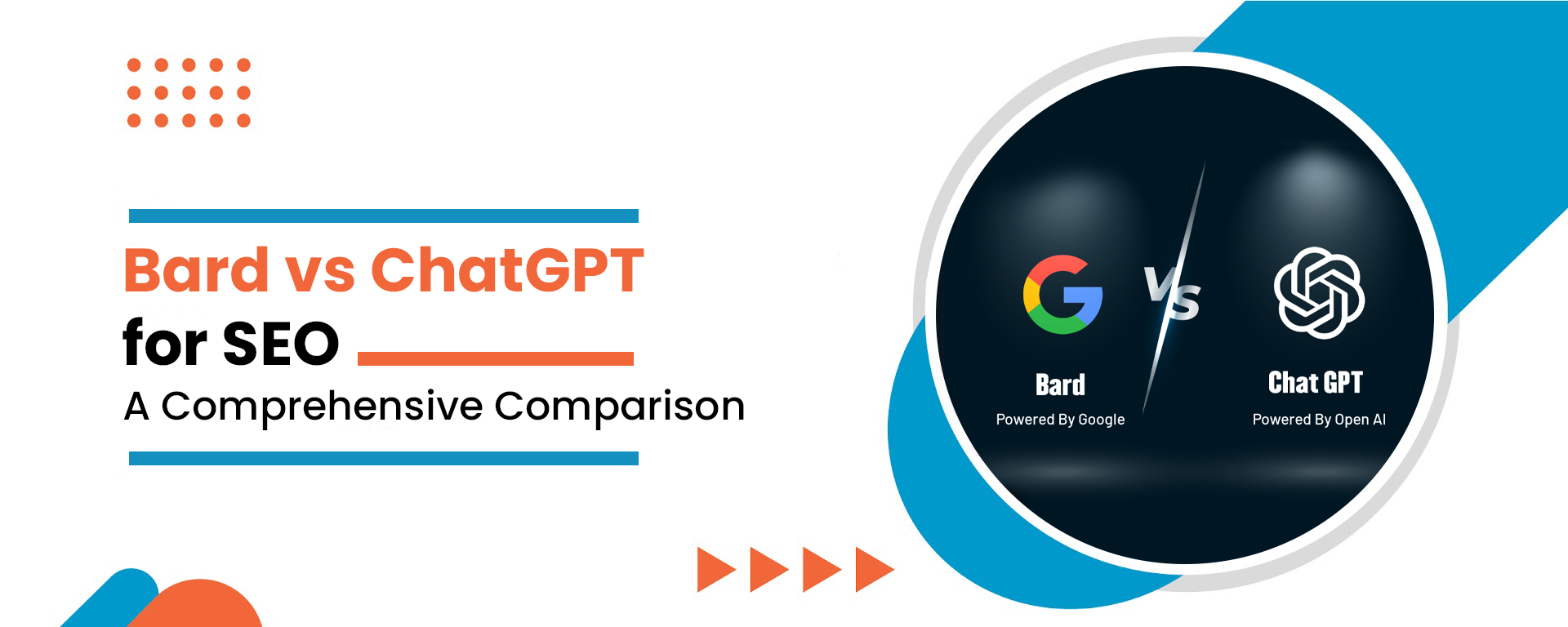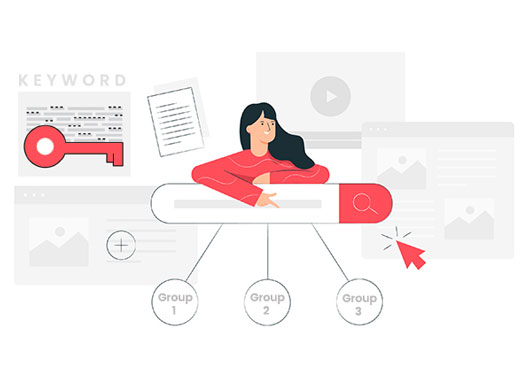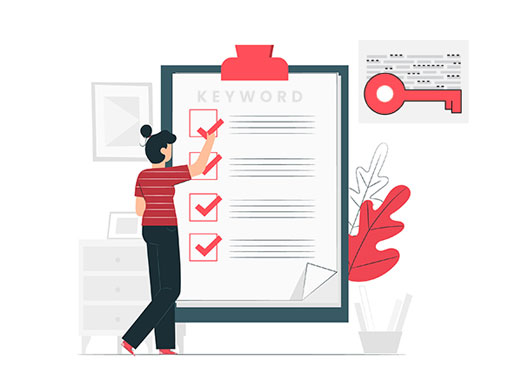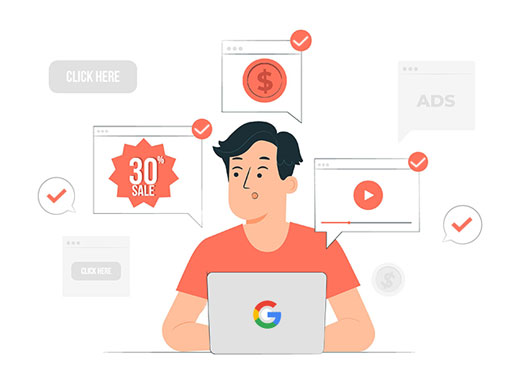Bard vs ChatGPT for SEO: A Comprehensive Comparison
Contributors:
Rohit Khot
Published: October 20, 2023

Summary
Let’s compare Google Bard and ChatGPT in terms of their functionality, advantages, and use cases for SEO. It highlights the unique features of both AI tools, their impact on SEO strategies, and how businesses can leverage each for content creation, keyword research, and enhancing online visibility. The article aims to guide users in choosing the right tool based on their specific SEO needs and objectives.
What powers ChatGPT vs. Google BARD?
ChatGPT vs. Google BARD
It is very natural to ask, ‘Is bard better than Chatgpt?’ or ‘between bard and chatgpt which is better?’ Bard and ChatGPT are both advanced AI-powered chatbots. Both these GPT models are known for their ability to generate coherent and contextually relevant text, but they have some differences in their development and capabilities.
ChatGPT:
- Developed by OpenAI, ChatGPT was launched in late November 2022.
- ChatGPT achieved popularity and surpassed 100 million active users within two months of its launch, making it one of the fastest-growing consumer applications in history.
- ChatGPT is known for its conversational abilities and ability to generate coherent and contextually relevant text to user queries.
- It is based on OpenAI’s GPT-3.5 architecture, a highly advanced language model.
Google’s Bard:
- Bard meaning Google Bard AI, Google’s AI-powered chatbot designed to provide fresh, high-quality responses to user queries.
- It is powered by LaMDA, a large language model trained on a tremendous dataset of text and code.
- Bard’s primary focus is on providing high-quality responses, and it is designed to be a helpful and informative chatbot.
Bard vs ChatGPT: While both ChatGPT and Bard are impressive language models, the choice between them may depend on the specific use case and the type of responses or interactions users seek. Each has its strengths and capabilities, and the choice may depend on the user’s preferences and requirements.
Here is a list of features available with ChatGPT:
- User-Friendly Design: ChatGPT is designed to be user-friendly and easy to use.
- Complimentary Access: ChatGPT is accessible for free to everyone.
- Conversation Memory: It remembers previous user inputs in the ongoing conversation.
- Text Generation: It generates text-based responses based on user input.
- Content Moderation: ChatGPT is trained to decline inappropriate requests and maintain a safe environment.
- Follow-Up Interaction: It allows users to make follow-up questions or corrections in a conversation.
- Language Translation: ChatGPT can translate languages.
- Multilingual Support: It is capable of handling multiple languages.
- ChatGPT Plus: A paid version called “ChatGPT Plus” offers various powerful plugins.
Here is a list of features available with Google Bard:
- Multilingual Capability: Bard AI supports collaboration in three languages, namely English, Japanese, and Korean.
- Integration with Google Services: It allows users to export text to Google Docs and Gmail.
- Google Workspace Access: Bard AI provides access to Google Workspace accounts for seamless productivity.
- Coding Support: Users can code in over 20 programming languages, including C++, Python, Java, Go, JavaScript, and TypeScript.
- Dark Theme: A dark theme option is available for user interface customization.
- Voice Search: Bard AI offers voice search capabilities to retrieve information.
Bard and ChatGPT share several similarities and differences
Similarities
- Both Bard and ChatGPT are trained on massive amounts of text data, enabling them to develop human-like text in reply to various prompts and queries.
- They are adaptable and can perform various tasks, including answering open-ended, challenging, or unusual questions.
- They have the capability to generate text in different creative formats, such as poems, code, scripts, musical pieces, emails, letters, and more.
Differences
- Bard is oriented on a more recent dataset, meaning it has access to more up-to-date information than ChatGPT.
- Bard is incorporated into Google’s search engine, allowing it to access and process real-world information in real time. This real-time access gives Bard an advantage in delivering current and accurate information.
- Bard is designed to be more informative and comprehensive in its responses, focusing on providing detailed and well-informed answers.
- ChatGPT often responds in a more creative and story-telling manner, which can make its responses more entertaining and imaginative.
These differences make Bard and ChatGPT suitable for different use cases. Bard is well-suited for providing real-time, accurate, and informative responses, while ChatGPT excels in generating creative and engaging text in a conversational style. The selection between them may rely on the specific conditions of a user’s interaction or information needs.
Bard vs chatGPT users
When we think about bard users vs chatGPT users, the numbers are not that surprising. Bard active users are growing rapidly.
Bard vs ChatGPT: Active Users – What We Know
While both Bard and ChatGPT are large language models with growing communities, determining precise active user numbers is difficult due to:
- Private data: Neither Google nor OpenAI release exact user numbers publicly.
- Engagement vs. active users: Distinguishing active participants from casual users is challenging.
- Rapidly evolving landscape: User bases fluctuate, making comparisons challenging.
Here’s what we can glean from available information:
- Similarweb data:
As of May 2023, Similarweb reported a 187% growth in Bard users compared to a flat growth for ChatGPT. However, this data doesn’t necessarily reflect overall user base size.
- News and articles:
Media coverage suggests both models have gained significant traction, but specifics are lacking.
- User sentiment:
Both Bard and ChatGPT communities express enthusiasm and engagement online, suggesting active user bases.
What is ChatGPT’s advantage over Google Bard?
Google Bard has several distinct capabilities that set it apart from ChatGPT:
Internet Access: Bard has access to the internet, allowing it to provide the latest information and real-time updates. In contrast, ChatGPT does not have internet access and relies solely on its pre-trained knowledge.
Voice Prompts: Bard AI is integrated with voice prompts, enabling users to interact with it using their voice. ChatGPT does not have voice prompt capabilities.
Export to Gmail or Docs: Bard AI offers an export feature, which is highly useful for content creators. Users can easily export Bard’s generated text to Google Docs or a Gmail account. This feature is not available in ChatGPT.
Built-in Google Search: Bard AI has a “Google Search” functionality integrated into its interface. Users can click the “Google it” button to initiate a Google search, allowing them to access a broader range of information beyond Bard’s capabilities. ChatGPT lacks this built-in search functionality.
Coding Capabilities: Bard AI is trained on text and code datasets, making it more proficient in coding tasks than ChatGPT, which is primarily trained on text. Bard can generate code in over 20 programming languages, making it a powerful tool for coding assistance and problem-solving.
These capabilities make Google Bard a more dynamic and versatile tool, particularly for users who require real-time information, voice interaction, content export functionalities, coding expertise, setting it apart from ChatGPT in these aspects.
What ChatGPT Can Do?
ChatGPT offers a wide range of capabilities, making it a versatile tool for various tasks. Here are some of the functions that ChatGPT can excel at:
Creating Blog Posts: ChatGPT can generate blog posts, and ChatGPT Plus, the paid version, can create detailed and creative content suitable for bloggers, writers, and content creators.
Generating YouTube Video Scripts: You can use ChatGPT to generate scripts for YouTube videos, including scripting, titles, and meta descriptions. This can be valuable for YouTubers and video content creators.
Code Interpretation: ChatGPT’s paid version offers a plugin called “Code Interpreter.” It allows users to work with Python for various complex tasks, including solving mathematical problems, data analysis and visualization, and file format conversions.
These capabilities showcase ChatGPT’s versatility for content creation, scripting, and more, making it a valuable tool for a wide range of applications.
Let’s discuss SEO:
Creating Meta Descriptions and Page Titles
- Both Bard and ChatGPT for seo content can create compelling page titles and meta descriptions for SEO. Still, they have distinct characteristics that may make one more suitable than the other for specific tasks.
- With its extensive training in text and code, Bard excels in generating comprehensive and informative content. This makes it well-suited for crafting page titles and meta descriptions that are not only informative but also engaging.
- ChatGPT, trained on a massive text dataset for conversational purposes, has a knack for generating creative and engaging content. While this might not be the traditional expectation for SEO, it can be beneficial in some scenarios. For instance, a creatively crafted page title or meta description has the capacity to attract more clicks and enhance the click-through rate (CTR).
- The choice between Bard and ChatGPT for creating page titles and meta descriptions depends on the specific goals and content style you seek for your SEO strategy.
- ChatGPT could be the best option if the goal is to provide exciting and informative content that will increase click-through rates. However, Bard would be a better choice if the objective is to create in-depth and educational content that helps with search engine results.
Creating Opening Paragraphs for Landing Pages
When it comes to creating opening paragraphs for landing pages, both Bard and ChatGPT have their unique approaches, as seen in their responses about SEO:
Bard’s Response:
“SEO” refers to a technique used to increase the ranking of a website in search engine results (SERPs). The content, design, and coding of the website can all be optimized to achieve this. SEO can be a time-consuming process, but it has the ability to greatly increase website traffic and lead production.
ChatGPT’s Response:
SEO is one of the most crucial facets of online marketing, it is also a difficult and dynamic field. One can make sure that potential clients who are looking for the goods or services you provide will see your content by optimizing your website for search engines. Including the keyword research, content optimization, and link development, there are other elements that go into effective SEO. You may raise the rating of your website in search results and draw more site visitors by adhering to best practices and keeping up with the most recent developments.
The concept and explanation of SEO in Bard’s response are both succinct and educational. Instead, ChatGPT emphasizes the value of SEO and the numerous aspects involved in a more imaginative and storytelling manner.
The target audience, industry, and marketing objectives all play a role in determining whether to choose brief but informative text or imaginative yet captivating content for introductory paragraphs. The attention of users may be better captured and held by innovative and engaging content than by concise and informative information, which is often more SEO-friendly. By balancing the two strategies, you can produce content that is both educational and interesting, which will improve your SEO rankings and user engagement.
Both ChatGPT and Bard can be versatile tools for various content-related tasks:
Creating a Summary of a Long-Form Article: Bard may be a better choice for this task as it can generate concise and informative content, making it suitable for providing a clear and SEO-friendly summary at the top of a page.
Creating Engaging Excerpts for Article Thumbnails/Teasers: ChatGPT’s creative writing and storytelling nature can make it well-suited for crafting engaging and captivating excerpts that entice readers, especially for article thumbnails or teasers.
Consolidating Information and Generating Unique Articles: Both models can assist in consolidating information from various sources and generating unique articles based on that information. Their approaches may vary, with Bard being more concise and informative and ChatGPT adding a creative touch.
Rewriting Dull Articles: Both Bard and ChatGPT can be used to rewrite articles that need a more engaging and appealing tone, with ChatGPT’s creativity adding an extra flair to the content.
Spell Checking and Grammar Checking: Both models can be helpful for spell-checking and grammar-checking, ensuring that the content is free from errors.
The choice between Bard and ChatGPT for these tasks depends on the specific requirements and goals of the content, as well as the preferred style and tone.
Pricing Comparison: Bard AI vs ChatGPT
Here’s a comparison of the pricing for Bard AI and ChatGPT:
Bard AI:
- Currently free to everyone.
- Provides internet access and real-time information.
- Offers Google Search functionality.
- Supports voice interaction.
- Allows exporting results to Gmail or Docs.
ChatGPT:
- The base version is free for all users.
- A paid plan called “ChatGPT Plus” is priced at $20 per month per user.
- ChatGPT Plus includes faster response times, access to more secured servers, and usability during peak hours.
- ChatGPT Plus users gain access to features such as GPT-4, plugins like Code Generator, and more.
- Priority support and early access to future updates are provided to ChatGPT Plus subscribers.
Whether to choose the free or paid version of ChatGPT depends on your usage and requirements. The free version is suitable for occasional use or users on a budget, while ChatGPT Plus is beneficial for heavy users who require faster response times and access to advanced features.
Pros & Cons of Google Bard Vs ChatGPT
Here are the pros and cons of Google Bard AI and ChatGPT:
Google Bard AI Pros:
- Bard can generate a great range of text, including translation, creative content, coding, scripts, poems, lyrics, emails, blog posts, and more.
- It is completely free to use, accessible to users in 180 countries.
- Bard has internet access, providing real-time data and information.
- It offers informative responses and can summarize complex topics.
- Bard’s responses improve over time with user feedback, as it learns from past conversations and context.
- It can assist with writing by providing feedback on grammar and writing style.
- It can generate creative ideas for various projects.
- It serves as a conversational bot or friend to assist with different tasks.
Google Bard AI Cons:
- As Bard is still in the development stage, it may provide inaccurate or inappropriate responses, and its performance may not be consistent.
Here are the pros and cons of ChatGPT:
ChatGPT Pros:
- ChatGPT can function as an AI chatbot for human-like conversations.
- It offers text generation, language translation, and more.
- A free version is available, which is sufficient for many users.
- The paid version, “ChatGPT Plus,” offers advanced features and plugins.
- ChatGPT excels at automating repetitive tasks, such as customer support and automated emails.
- It is suitable for businesses looking to provide 24/7 customer service through an AI live chatbot.
- Valuable for content creators as it can generate content like blog posts, video scripts, and social media posts.
- Beneficial for programmers as it can generate code, assist with debugging, and more.
ChatGPT Cons:
- ChatGPT can sometimes misinterpret requests and generate inappropriate or incorrect responses.
- It may generate repetitive content, which could be a limitation for content creation.
- ChatGPT’s knowledge is limited to information available up to 2021; it lacks access to real-world, real-time data.
The winner in the comparison between Google Bard AI and ChatGPT depends on your specific needs and priorities.
Google Bard AI may be the better choice if:
- Bard can supply up-to-date data, thus you need access to real-time information.
- Many different jobs, such as coding and content creation, require your involvement.
- You prefer a free AI chatbot, as Google Bard’s free version is considered superior to the free version of ChatGPT.
ChatGPT, particularly the ChatGPT Plus version, may be more suitable if:
- You require advanced language models, such as GPT-4, which is equipped with a massive dataset and more parameters.
- You are willing to pay for a subscription, as ChatGPT Plus offers enhanced features and faster response times.
- Your needs primarily revolve around text generation, language translation, and similar language-related tasks.
Ultimately, the choice completely depends on your specific use case and whether you prioritize access to real-time data or advanced language models. Both Google Bard AI and ChatGPT have their unique strengths and are valuable tools in the right context.
Conclusion
Both models exhibit unique strengths in the ongoing comparison of Bard AI and ChatGPT. ChatGPT 4 emerges as a versatile and sophisticated choice for a wide spectrum of language-related tasks. However, it’s crucial to acknowledge that these models are constantly evolving, and their capabilities will undergo further enhancements over time.
As these models continue to advance, the ChatGPT vs. Google Bard rivalry is poised to become even more captivating. Rest assured, we will remain here to keep you updated on the latest developments in this space.
Remember: The “which response do you prefer” question is key for AI models to learn and improve. So, experiment with both and share your feedback!
FAQs:
1. Can Bard suggest SEO keywords and phrases as effectively as ChatGPT?
ChatGPT has been specially designed for tasks like proposing SEO keywords and phrases, whereas Google Bard AI is a potent language model with a wide range of skills. For assignments requiring SEO keyword and phrase suggestions, ChatGPT is a more acceptable option because of its natural language comprehension and content production capabilities.
2. What are the specific SEO features and tools offered by Bard and ChatGPT?
Both Bard AI and ChatGPT are versatile language models that can assist with content creation and text-based tasks, but they do not offer specific SEO features or tools. SEO (Search Engine Optimization) typically involves keyword research, on-page optimization, backlink analysis, and other specialized tasks that are not within the primary scope of these language models. For specific SEO tasks, it’s advisable to use dedicated SEO tools and platforms designed for such purposes.
3. How does Bard’s content quality and relevance compare to ChatGPT’s for SEO purposes?
ChatGPT generally provides higher-quality and more relevant content for SEO purposes compared to Bard AI. ChatGPT has been fine-tuned for various language tasks and can assist with content creation, including generating SEO-focused content. Its responses are often more accurate and tailored to specific queries, making it a more suitable choice for SEO-related tasks.
Bard AI, while versatile in generating content, may not consistently meet the specific demands of SEO. It may need more precision and relevance for SEO purposes, and its responses can sometimes be more general in nature.
4. Is Bard capable of providing on-page SEO recommendations, and how does this compare to ChatGPT’s capabilities?
Bard AI, like ChatGPT, is not specifically designed to provide on-page SEO recommendations. Both models excel in natural language understanding and content generation but do not offer specialized SEO tools or capabilities for providing on-page SEO recommendations.
For on-page SEO recommendations, it’s advisable to use dedicated SEO tools and platforms designed to analyze websites and provide actionable suggestions to improve SEO performance. While Bard and ChatGPT can assist in generating content related to on-page SEO, they are not replacements for dedicated SEO tools.
5. What is the pricing structure for Bard’s SEO services compared to ChatGPT’s SEO-related services?
Both Bard AI and ChatGPT do not have price plans for services connected to SEO, nor do they offer particular SEO services. The majority of these AI models are language models that can help with tasks involving words, such as creating content.
Dedicated SEO agencies or platforms that offer SEO services are often required if you want SEO services. These services frequently have unique pricing plans based on the extent of the job, the degree of optimization needed, and other elements.
It’s important to remember that AI models’ capabilities and offerings may change over time, so it’s a good idea to check with the relevant providers for any adjustments to their services and prices connected to SEO.
6. Can Bard and ChatGPT assist in optimizing meta tags and descriptions for SEO?
Bard and ChatGPT can assist in generating content, including meta tags and descriptions, for SEO purposes. They can provide text suggestions that you can consider using in your meta tags and descriptions. However, the effectiveness of these suggestions may vary, and it’s important to review and fine-tune the generated content to ensure it aligns with your specific SEO goals and keywords.
While they can help with content generation, they do not offer dedicated SEO optimization services or tools. For comprehensive SEO strategies and optimizations, working with SEO experts and using specialized SEO tools is recommended.
7. How well do Bard and ChatGPT handle SEO-specific content such as product descriptions or blog posts?
Bard and ChatGPT are capable of generating content, including product descriptions and blog posts, that can be used for SEO purposes. However, their performance in handling SEO-specific content may vary based on the sophistication of the task and the specific requirements.
Both Bard and ChatGPT can provide valuable assistance for simple content generation tasks. They can help brainstorm ideas, generate content, and suggest keywords.
However, more specialized or industry-specific SEO content may require additional fine-tuning and expertise to ensure that the content aligns with the best SEO practices and effectively targets the desired keywords and audience.
In summary, Bard and ChatGPT can be valuable tools for generating content, but for SEO-specific content, especially in competitive markets, it’s recommended to review and optimize the generated content to meet specific SEO goals.
8. Is ChatGPT good for SEO?
ChatGPT can be partially helpful for SEO, but it has limitations. It excels at generating content, translating languages, and basic keyword suggestions. However, it lacks real-time data access, may provide inaccurate information, and struggles with complex SEO tasks like on-page optimization and backlink analysis. For best SEO results, use ChatGPT alongside dedicated SEO tools and human expertise.
9. How to use ChatGPT for local SEO?
While ChatGPT can’t handle comprehensive local SEO, it can help brainstorm ideas. Use it to:
- Generate location-specific content ideas (e.g., “list of best cafes in Seattle”).
- Translate descriptions for different languages.
- Create engaging social media posts for local events.
Remember to fact-check and optimize content further for local SEO best practices.
10. How do I find SEO keywords on ChatGPT?
ChatGPT doesn’t directly generate SEO keywords. Instead, use it to:
- Describe your target audience and niche.
- Generate content around those topics.
- Analyze the content for relevant keywords that naturally emerge.
- Combine this with dedicated keyword research tools for a comprehensive approach.
11. How do I write a SEO friendly article using ChatGPT?
- Provide clear instructions: Describe the article topic, target audience, and desired keywords.
- Use ChatGPT for brainstorming: Generate outlines, intros, or content sections.
- Fact-check and edit: Ensure accuracy, relevance, and keyword integration.
- Optimize manually: Craft meta descriptions, headers, and title tags.
Remember, ChatGPT helps with content creation, not full SEO optimization.
12. Does Google detect ChatGPT content?
Google doesn’t have a specific method to detect ChatGPT-generated content. However, they prioritize high-quality, informative content with unique value. Over-reliance on AI-generated content without human review and optimization might harm your SEO performance.
Read More:
The Battle of SEO Titans: Ubersuggest vs SEMrush
A Comprehensive Comparison: SEMrush vs Moz for SEO Success
Rank Math vs Yoast: A Comparison Guide
2023 SEO Showdown: Ahrefs vs SEMrush – Which Tool Reigns Supreme
What is Technical SEO? Exploring the Technical Aspects of Website Optimization
SEO ROI: A Comprehensive Guide for Marketers
About the Author
SEO Manager
The SEO wizard, Rohit is keen on sharing his experiences and expertise with his readers. An ardent SEO follower, his blogs are up-to-date with the latest gossip & news of the SEO world.
 Growth Strategy and Planning
Growth Strategy and Planning Inbound Growth
Inbound Growth Growth Hacking
Growth Hacking Search Engine Optimization
Search Engine Optimization Paid and Performance Marketing
Paid and Performance Marketing Social Media Marketing
Social Media Marketing AI-Driven Growth Strategy
AI-Driven Growth Strategy AI-Native Workflow Automation
AI-Native Workflow Automation Generative Engine Optimization
Generative Engine Optimization
 Tools
Tools Growth Tools
Growth Tools Offers
Offers Quizzes
Quizzes Insights
Insights






















Leave a Reply